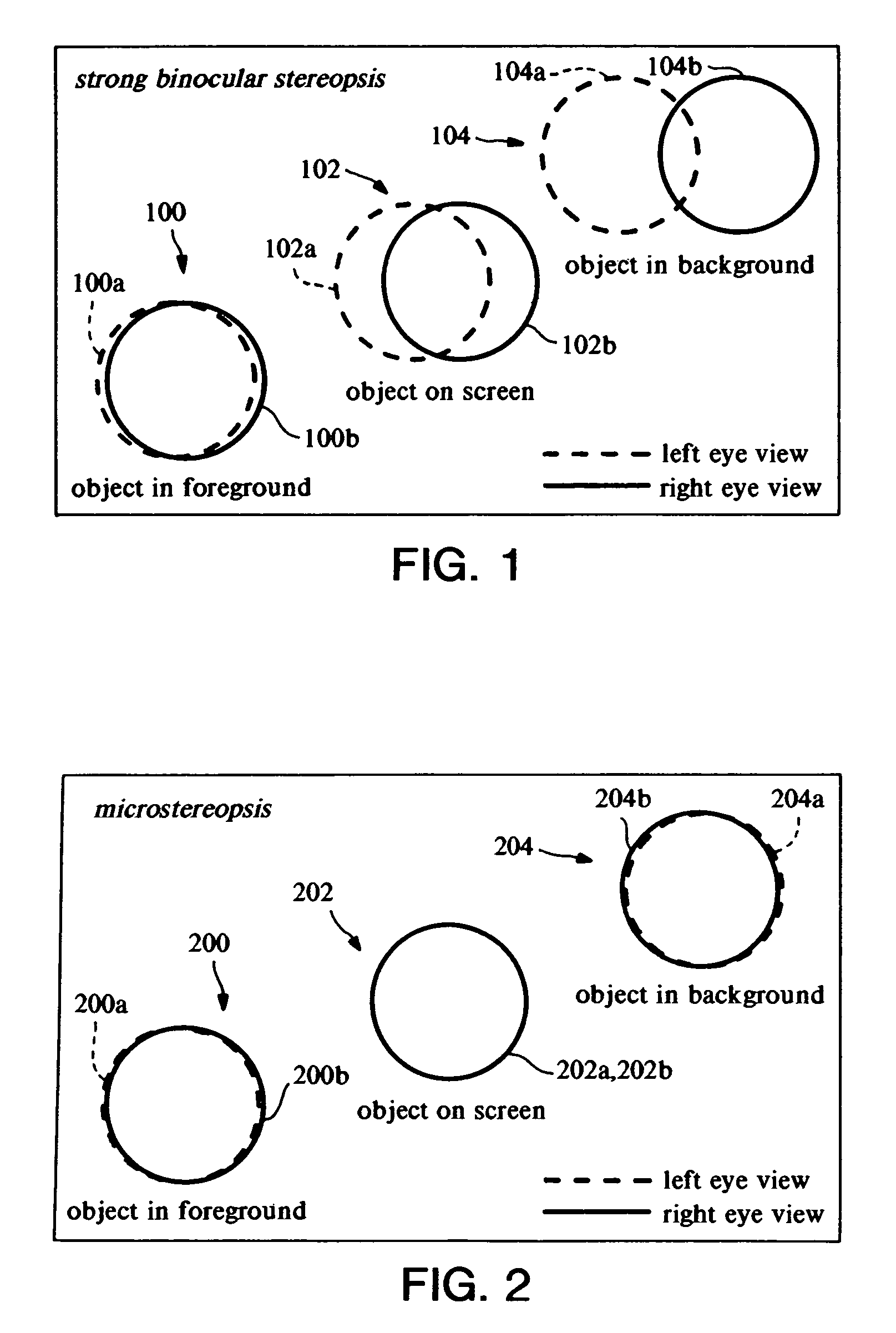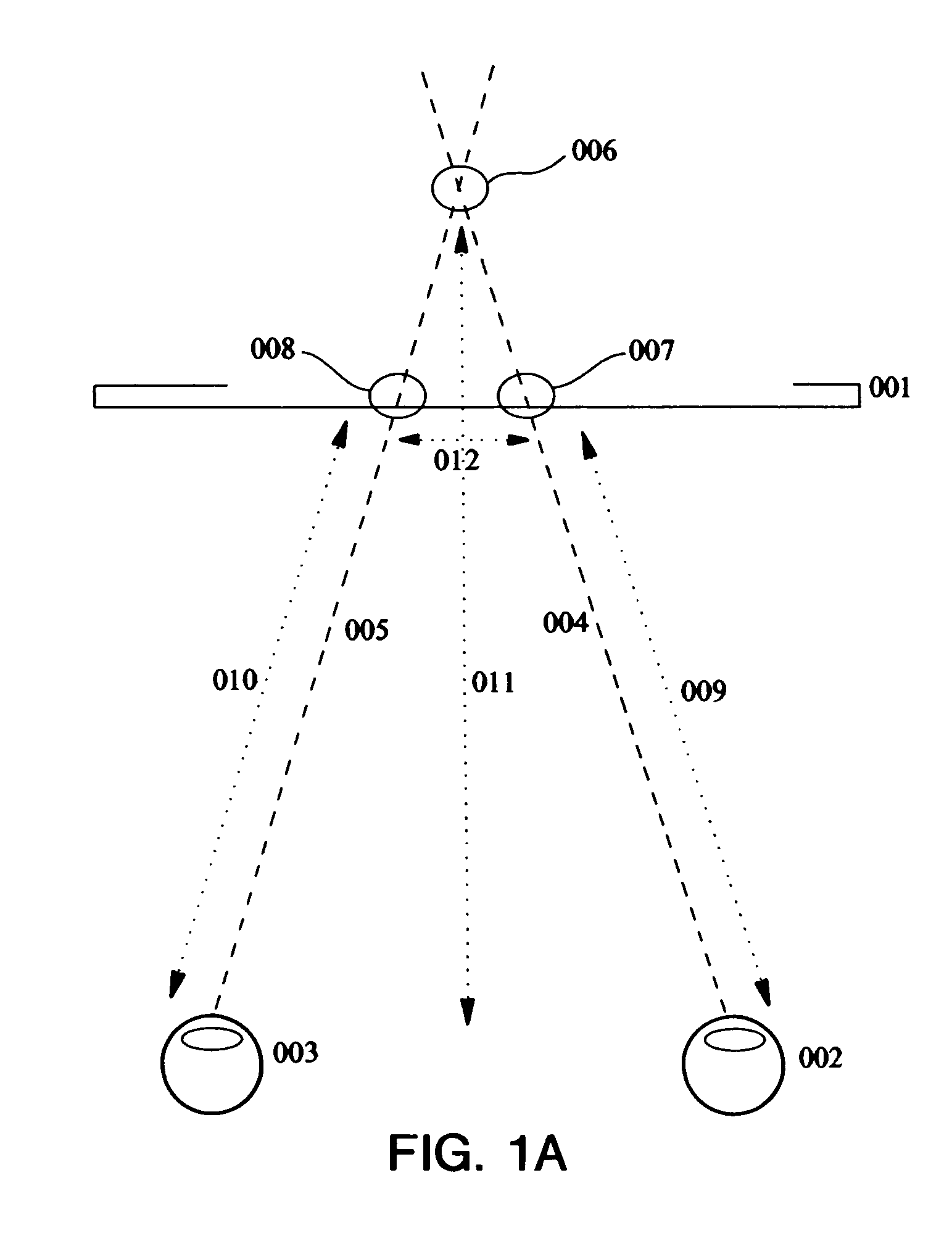3-D imaging arrangements
a three-dimensional imaging and arrangement technology, applied in the field of three-dimensional imaging arrangement, can solve the problems of difficult to achieve the desired consistency among stimuli (or cues), physical and mental discomfort of presentations, and difficulty in maintaining the desired consistency of stimuli, so as to reduce disparities, stimulate binocular depth perception, and achieve the effect of reducing disparities
- Summary
- Abstract
- Description
- Claims
- Application Information
AI Technical Summary
Benefits of technology
Problems solved by technology
Method used
Image
Examples
Embodiment Construction
[0023]Three-dimensional imagery can be displayed a flat screen 001 with the arrangement illustrated in FIG. 1a. As shown, right eye 002 and left eye 003, respectively, perceive screen points 007 and 008 along respective lines of sight 009 and 010. Shutter, barrier, or other means not illustrated explicitly in FIG. 0 are employed to prevent right eye 002 from perceiving screen point 007 intended for left eye 003, and to prevent left eye 003 from perceiving screen point 008 intended for right eye 002. Lines of sight 009 from right eye 002 and 010 from left eye 003 converge at virtual scene point 006 behind screen 001. The human brain fuses separate right eye 002 and left eye 003 perceptions of screen points 007 and 008 into a single three-dimensional perception at virtual scene point 006. The distance 012 between corresponding screen points 007 and 008 is called the “disparity”.
[0024]Conventional 3D displays use large on screen disparities, as illustrated in FIG. 1. As shown, the left...
PUM
 Login to View More
Login to View More Abstract
Description
Claims
Application Information
 Login to View More
Login to View More - R&D
- Intellectual Property
- Life Sciences
- Materials
- Tech Scout
- Unparalleled Data Quality
- Higher Quality Content
- 60% Fewer Hallucinations
Browse by: Latest US Patents, China's latest patents, Technical Efficacy Thesaurus, Application Domain, Technology Topic, Popular Technical Reports.
© 2025 PatSnap. All rights reserved.Legal|Privacy policy|Modern Slavery Act Transparency Statement|Sitemap|About US| Contact US: help@patsnap.com



